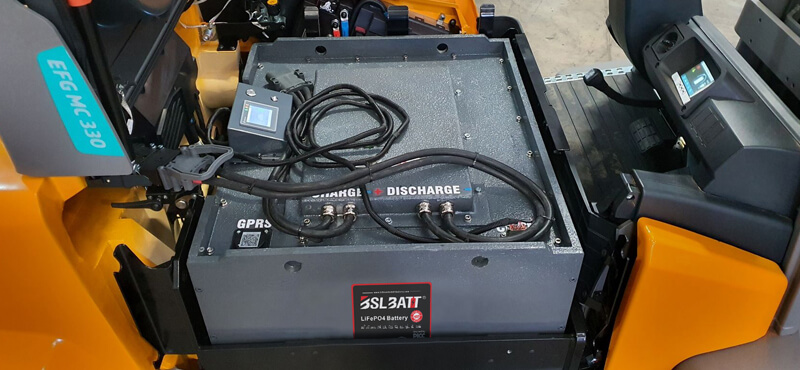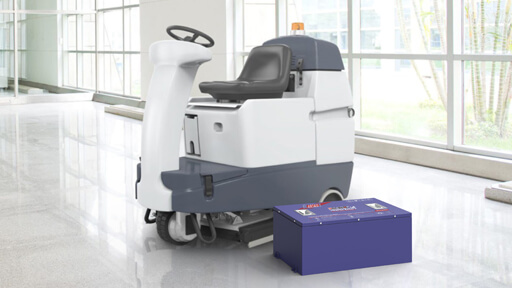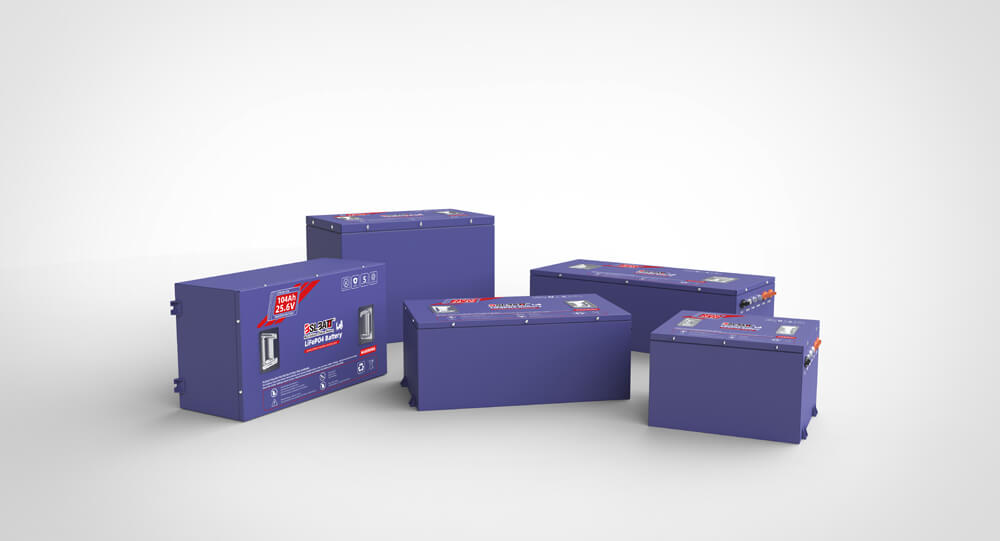Industry Application
How to Choose the Best Battery for Floor Cleaning Machines
Introduction to Floor Cleaning Machine Batteries
Choosing the right battery for your floor cleaning machine is crucial for efficient and effective cleaning operations. Floor cleaning machines, such as scrubbers, sweepers, and vacuums, rely heavily on batteries to power their motors and provide the necessary runtime for completing cleaning tasks. The battery you select can significantly impact the machine’s performance, runtime, and overall cost of ownership.
Floor cleaning machines come in various types, including walk-behind models, ride-on machines, and robotic cleaners. Each type has specific battery requirements based on factors like machine size, cleaning area, and runtime needs. Walk-behind machines generally require smaller and lighter batteries, while ride-on machines and larger scrubbers demand more powerful and higher-capacity batteries.
Battery requirements for floor cleaning machines typically revolve around factors such as voltage, amp-hour (Ah) rating, and battery chemistry. The voltage determines the power output, while the Ah rating indicates the battery’s capacity and potential runtime. Common battery chemistries used in floor cleaning machines include lead-acid, lithium-ion, and absorbed glass mat (AGM) batteries, each with its own advantages and limitations.
Types of Batteries for Floor Cleaning Machines
There are several types of batteries commonly used in floor cleaning machines, each with its own advantages and disadvantages. The most common battery types include lead-acid, lithium-ion, gel cell, absorbed glass mat (AGM), and nickel-cadmium (NiCd).
Lead-Acid Batteries: These are the most traditional and widely used batteries for floor cleaning machines. Lead-acid batteries are known for their affordability, reliability, and high power output. However, they are also heavy, require regular maintenance, and have a shorter lifespan compared to other battery types.
Lithium-Ion Batteries: Lithium-ion batteries are becoming increasingly popular in floor cleaning machines due to their lightweight, high energy density, and long lifespan. They also have a low self-discharge rate, meaning they can hold a charge for longer periods when not in use. However, lithium-ion batteries are more expensive than lead-acid batteries and may require specialized charging systems.
Gel Cell Batteries: Gel cell batteries are a type of lead-acid battery that uses a gel electrolyte instead of a liquid. They are spill-proof, maintenance-free, and have a longer lifespan than traditional lead-acid batteries. However, gel cell batteries are more expensive and may have a lower power output.
Absorbed Glass Mat (AGM) Batteries: AGM batteries are another type of lead-acid battery that uses a glass mat to absorb the electrolyte. They are spill-proof, maintenance-free, and have a longer lifespan than traditional lead-acid batteries. AGM batteries also have a higher power output and can handle deep discharge cycles better than gel cell batteries.
Nickel-Cadmium (NiCd) Batteries: NiCd batteries were once popular in floor cleaning machines, but they are becoming less common due to environmental concerns and the availability of better battery technologies. NiCd batteries have a high power output and can handle deep discharge cycles well, but they are prone to memory effect (losing capacity if not fully discharged regularly) and contain cadmium, which is a toxic heavy metal.
When choosing a battery type for your floor cleaning machine, consider factors such as runtime, weight, maintenance requirements, and cost. Lithium-ion, gel cell, and AGM batteries often offer longer runtimes and lower maintenance, but they may be more expensive upfront. Lead-acid batteries remain a cost-effective option, but they require more maintenance and have a shorter lifespan.
Battery Capacity and Runtime
Battery capacity and runtime are crucial factors to consider when choosing a battery for your floor cleaning machine. The capacity determines how much energy the battery can store, while the runtime indicates how long the machine can operate on a single charge.
The importance of battery capacity lies in its direct correlation with the runtime. A higher capacity battery can power the machine for a longer period before needing to be recharged. This is particularly important for large facilities or areas that require extended cleaning sessions without interruptions.
Several factors can affect the runtime of a floor cleaning machine’s battery:
1.Battery Capacity: As mentioned, a higher capacity battery will generally provide a longer runtime.
2.Machine Power Consumption: More powerful machines with higher suction or scrubbing power will drain the battery faster, reducing the runtime.
3.Floor Surface and Debris: Cleaning heavily soiled or carpeted areas will require more power, reducing the runtime compared to smooth, hard floors.
4.Operator Behavior: Aggressive use of the machine, such as excessive scrubbing or rapid movements, can drain the battery faster.
5.Battery Age and Condition: Over time, batteries will degrade, reducing their capacity and runtime.
To estimate the runtime of a floor cleaning machine, you can use the following formula:
Runtime (hours) = Battery Capacity (Ah) x Battery Voltage (V) / Machine Power Consumption (W)
For example, if your machine has a 24V battery with a capacity of 12Ah and consumes 400W of power, the estimated runtime would be:
Runtime = 12Ah x 24V / 400W = 0.72 hours or approximately 43 minutes.
It’s important to note that this is an estimate, and actual runtime may vary based on the factors mentioned above. Manufacturers often provide runtime estimates for their machines and batteries under specific conditions, which can serve as a useful reference.
Battery Charging and Maintenance
Proper charging and maintenance practices are crucial for maximizing the lifespan and performance of your floor cleaning machine’s battery. Most modern batteries are designed for fast charging, but it’s essential to follow the manufacturer’s recommended charging procedures to avoid overcharging or undercharging, which can damage the battery and reduce its capacity over time.
Charging requirements vary depending on the battery type, but generally, lead-acid batteries should be charged after each use, while lithium-ion batteries can be charged more frequently without significant degradation. It’s important to use the correct charger for your battery type and model, as incompatible chargers can cause damage or safety hazards.
Charging cycles refer to the number of times a battery can be fully charged and discharged before it starts to lose significant capacity. Lead-acid batteries typically have a lower cycle life than lithium-ion batteries, but proper maintenance can help extend their lifespan. Avoid leaving batteries fully discharged for extended periods, as this can lead to permanent damage.
Proper maintenance practices include keeping the battery clean, ensuring good ventilation during charging, and inspecting for signs of damage or corrosion. Follow the manufacturer’s recommendations for storage and handling, as extreme temperatures or humidity can adversely affect battery performance and lifespan.
With proper care and maintenance, a high-quality battery for a floor cleaning machine can last several years, providing reliable power and reducing the need for frequent replacements. Regular monitoring and adherence to best practices can help you get the most out of your investment and ensure efficient, uninterrupted cleaning operations.
Battery Safety Considerations
Proper handling and disposal of batteries for floor cleaning machines is crucial for maintaining a safe work environment. These batteries often contain hazardous materials like lead-acid or lithium-ion, which can pose risks if not managed correctly.
When handling batteries, it’s essential to wear protective equipment such as gloves and safety glasses to avoid skin or eye contact with battery acid or other corrosive materials. Adequate ventilation is also necessary when charging or working with batteries, as they can release harmful gases.
Fire hazards are a significant concern with batteries, especially lithium-ion types. Overcharging, short circuits, or physical damage can lead to battery fires or explosions. It’s crucial to follow manufacturer guidelines for charging and storage and to immediately remove any damaged batteries from service.
Employers must also comply with Occupational Safety and Health Administration (OSHA) regulations regarding battery safety. These regulations cover topics such as employee training, personal protective equipment, and proper storage and disposal procedures.
Proper disposal of used batteries is essential to prevent environmental contamination. Many batteries contain toxic materials like lead or acid that can leach into soil and water if not disposed of correctly. Most municipalities have specific guidelines or facilities for battery recycling and disposal, which should be followed to ensure compliance with environmental regulations.
Choosing the Right Battery Size and Type
Selecting the appropriate battery size and type is crucial for ensuring optimal performance and efficiency in your floor cleaning machine. The battery’s capacity should match the machine’s power requirements and the area you need to cover during a single cleaning session.
When choosing a battery, consider the following factors:
Matching Battery to Machine Requirements: Different floor cleaning machines have varying power demands. Consult your machine’s manual or specifications to determine the recommended battery voltage, amperage, and capacity. Using a battery that doesn’t meet the machine’s requirements can lead to underperformance, premature battery failure, or even damage to the machine.
Floor Area Coverage: The size of the area you need to clean will dictate the battery’s required runtime. Larger spaces or facilities will require batteries with higher capacities to ensure you can complete the cleaning task without interruption. Consider the square footage of the area, as well as any obstacles or tight spaces that may impact the cleaning time.
Runtime Needs: Different cleaning tasks may require varying runtimes. For example, a deep cleaning session may take longer than a routine maintenance clean. Evaluate your typical cleaning routine and choose a battery that can provide sufficient runtime to complete the task without needing to recharge or swap batteries midway.
Consider investing in batteries with higher capacities or multiple battery packs if you have extensive cleaning needs or large areas to cover. This will minimize downtime and ensure uninterrupted cleaning sessions.
Cost and Budget Considerations
When selecting a battery for your floor cleaning machine, it’s crucial to consider the associated costs and budget implications. The upfront cost of the battery itself is just one part of the equation – you’ll also need to factor in operational costs and potential replacement costs over the battery’s lifespan.
Upfront Cost: Batteries for floor cleaning machines can vary significantly in price, depending on the type, capacity, and brand. Lead-acid batteries are generally the most affordable option, while lithium-ion and other advanced battery technologies tend to be more expensive. However, the higher upfront cost of lithium-ion batteries may be offset by their longer lifespan and lower operational costs.
Operational Costs: The operational costs of a battery include the energy required to charge it and any maintenance expenses. Lead-acid batteries typically have higher energy consumption during charging, which can translate into higher electricity bills over time. Lithium-ion batteries, on the other hand, are more energy-efficient and may result in lower operational costs in the long run.
Replacement Costs: The lifespan of a battery can vary greatly depending on factors such as usage patterns, charging habits, and maintenance. Lead-acid batteries generally have a shorter lifespan compared to lithium-ion batteries, which means you may need to replace them more frequently. This can add up to significant replacement costs over time, especially if you have multiple floor cleaning machines.
Cost-Benefit Analysis: To make an informed decision, it’s essential to conduct a cost-benefit analysis that takes into account the upfront cost, operational costs, and potential replacement costs over the expected lifespan of the battery. While lithium-ion batteries may have a higher initial cost, their longer lifespan, lower operational costs, and reduced maintenance requirements may make them a more cost-effective choice in the long run, particularly for high-usage scenarios or large fleets of floor cleaning machines.
When evaluating the cost-benefit analysis, consider factors such as the size of your facility, the frequency of cleaning, the number of machines in your fleet, and your overall budget constraints. Additionally, explore any available incentives, rebates, or tax credits for purchasing energy-efficient or environmentally-friendly battery technologies, as these can further offset the upfront costs.
Top Battery Brands and Models
When choosing the best battery for your floor cleaning machine, it is important to consider reputable brands with a proven track record of quality and performance. Some of the top battery manufacturers in the industry include:
Trojan Battery Company: Trojan is a leading brand known for its high-quality deep-cycle batteries designed for demanding applications such as floor cleaning machines. Their flooded lead-acid batteries, such as the Trojan T-105 and Trojan T-145, are popular for their durability and long-lasting performance.
BSLBATT Battery: BSLBATT is a 20-year-old Chinese lithium battery supplier. They primarily produce lithium iron phosphate (LiFePO4) batteries, which are known for their maintenance-free operation, ultra-high energy density, strong durability, and advanced battery management system (BMS) components. These batteries are designed for industrial applications, including floor cleaning machines, with models like the B-LFP-24-105 and B-LFP-24-200 being particularly well-received in North America, Central and South America, Europe, and Asia Pacific due to their excellent quality and powerful cell design.
Crown Battery: Crown Battery is a trusted name in the battery industry, offering a wide range of flooded lead-acid and AGM (absorbed glass mat) batteries. Their Crown CR-235 and Crown CR-305 models are ideal for floor cleaning machines, providing reliable power and long run times.
EnerSys: EnerSys is a global leader in energy storage solutions, offering a comprehensive line of batteries for various applications, including floor cleaning machines. Their NexSys line of thin plate pure lead (TPPL) batteries, such as the NexSys 12NXS33 and NexSys 12NXS40, is known for its high energy density and long cycle life.
It is also essential to consider customer reviews and ratings when choosing a brand, battery, and model. Many online platforms, such as Amazon, offer valuable insights from real users, allowing you to make an informed decision based on their experiences with specific battery models. Positive reviews highlight factors such as long run times, consistent performance, and durability, which can help guide your selection.
Battery Replacement and Disposal
Proper battery replacement and disposal are crucial for maintaining the efficiency and safety of your floor cleaning machines. Over time, batteries will naturally deteriorate, leading to reduced runtime and performance. Recognizing the signs of battery deterioration can help you plan for a timely replacement.
One of the most obvious indicators is a significant decrease in the machine’s runtime between charges. If you notice that the battery drains much faster than usual, it may be nearing the end of its lifespan. Additionally, if the battery struggles to hold a charge or requires frequent recharging, it’s likely time for a replacement.
Another sign of battery deterioration is physical changes, such as swelling, leaking, or discoloration of the battery casing. These issues can pose safety risks and should be addressed immediately by replacing the battery.
When it comes to disposing of old batteries, it’s essential to follow proper procedures to minimize environmental impact and comply with local regulations. Many batteries contain hazardous materials, such as lead or lithium, which can be harmful if not handled correctly.
The first step in proper battery disposal is to check with your local waste management authority or recycling center for specific guidelines. Many areas have dedicated battery recycling programs or collection points where you can safely drop off used batteries.
If recycling options are not available in your area, you may need to take additional precautions when disposing of batteries in regular household waste. This may include taping the battery terminals to prevent short-circuiting or wrapping the battery in a non-conductive material.
Alternatively, some battery manufacturers or retailers offer take-back programs, allowing you to return used batteries for proper recycling or disposal. These programs can be an convenient and environmentally responsible option for getting rid of old batteries.
Remember, improper battery disposal can lead to soil and water contamination, posing risks to human health and the environment. By taking the necessary steps to recycle or properly dispose of your floor cleaning machine batteries, you can contribute to a more sustainable future.
Future Trends and Innovations
The battery technology for floor cleaning machines is rapidly evolving, driven by the demand for longer runtimes, improved energy efficiency, and a smaller environmental footprint. One of the most promising emerging technologies is lithium-ion batteries. These batteries offer higher energy density, longer lifespan, and faster charging times compared to traditional lead-acid batteries. Additionally, lithium-ion batteries are lighter and more compact, making them an ideal choice for portable and cordless floor cleaning machines.
Another trend in the industry is the development of more sustainable and eco-friendly battery solutions. Manufacturers are exploring the use of recycled materials and implementing closed-loop recycling programs to reduce the environmental impact of battery production and disposal. Some companies are also investing in research and development of alternative battery chemistries, such as sodium-ion and solid-state batteries, which have the potential to be more environmentally friendly and cost-effective.
Energy efficiency is also a key focus area for battery manufacturers. Advanced battery management systems and intelligent charging algorithms are being developed to optimize battery performance and extend their lifespan. These systems can monitor battery health, adjust charging rates, and prevent overcharging or deep discharging, which can damage the battery cells.
Furthermore, the integration of smart technologies and connectivity features is becoming increasingly prevalent in floor cleaning machines. Bluetooth and Wi-Fi connectivity allow for remote monitoring and control of battery levels, charging status, and machine performance. This not only enhances user convenience but also enables predictive maintenance and efficient fleet management for commercial and industrial applications.
Overall, the future of batteries for floor cleaning machines looks promising, with innovative technologies and a strong focus on sustainability, energy efficiency, and user-friendly features. As these advancements continue to evolve, users can expect longer-lasting, more powerful, and more environmentally responsible battery solutions for their floor cleaning needs.
















